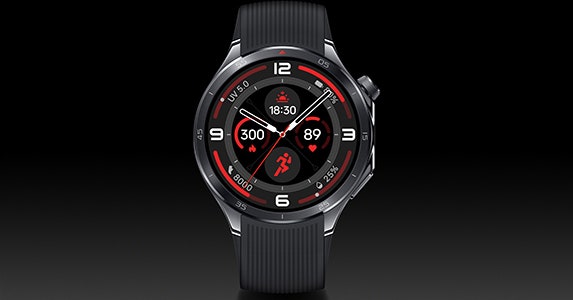Sleep tracking is more accurate now, even picking up the occasional moments when I fall asleep on the couch. I’ve noticed richer data analysis in the OnePlus OHealth app. It extrapolated, for example, that my awake time was somewhat long one night, and that could be impacted by my sleep environment.
Photograph: Julian Chokkattu
I didn’t get much out of the wrist temperature, though this may help women predict periods as my colleague has found using other smart wearables with skin-temperature sensors. I did give the new Vascular Health app a try—it measures arterial stiffness and subsequent risk of cardiovascular disease. Thankfully, my result was “Normal.” You can also get “Low Risk” and “High Risk.” It’s hard to measure the accuracy of this, though I can say for sure that my physician has yet to mention any cardiovascular issues when I visit. Of course, OnePlus is quick to mention that these results are not intended for use in diagnosis or treatment.
One new feature that’s not available yet is 60s Health Check-In. The idea is that within 60 seconds, you can tap your finger on the scan button and get results for six metrics: heart rate, blood oxygen (SpO2), mental wellness, wrist temperature, sleep quality, and vascular age. OnePlus says this will arrive in March.
The only metric I don’t care much for is Mind and Body. OnePlus claims this tool uses the heart-rate variability, resting heart rate, and activity intensity data to asses stress levels. More often than not, I found the results vague and not helpful. It keeps saying “Looking good. You’re dealing with stress like a pro”—even though I didn’t change my habits and had varying levels of stress over the past week.
While it may still feel like a step or two behind competitors like Samsung and Google, it feels like OnePlus is quickly catching up in health and fitness. It’s also putting its money where its mouth is—the company recently opened up a new Health Lab in China to increase research and development and improve testing methodologies.
Health aside, I keep coming back to the 5-day battery life. This is especially useful after a year or two of daily use—by then other smartwatches may struggle to last a full day, but the Watch 3 should still be able to go a few days on a single charge.
It’s too bad that OnePlus is only committing to two years of software updates. Samsung and Apple support their smartwatches for longer, and this would pair well with the OnePlus battery longevity story. Still, this is a sacrifice I’m willing to let slide because, guess what? I don’t have to charge my damn watch every day.


